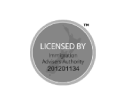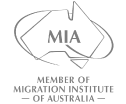Australia’s permanent residency (PR) system offers skilled professionals a pathway to long-term settlement, but maintaining this status requires careful navigation of compliance requirements and proactive planning. With the 2024–25 Migration Program allocating 185,000 spots and prioritizing regional development[1], understanding post-grant obligations has never been more critical.
Core Requirements for PR Retention
Residency Obligations
PR holders must meet a rolling five-year residency test:
- Reside in Australia for at least 730 days (2 years) within the initial five-year travel facility period
- Maintain continuous ties if absent longer than five years through:
- Employment contracts with Australian companies
- Property ownership or lease agreements
- Family members remaining in Australia
Failure to meet these requirements risks losing re-entry rights when your travel facility expires[4].
Compliance Conditions
All PR holders must:
- Avoid criminal convictions carrying 12+ month prison sentences
- Not owe $10,000+ in public debt (e.g., Medicare overpayments, tax liabilities)
- Update address details with Home Affairs within 14 days of moving[2]
Strategic Retention Pathways
Resident Return Visa (RRV) Options
When your initial travel facility nears expiration, consider:
| RRV Type | Eligibility Criteria | Validity |
|---|---|---|
| Subclass 155 | Met residency requirements | 5 years |
| Subclass 157 | Compelling reasons for absence | 3 months |
| Subclass 159 | Former citizens/PRs returning | 1 year |
Strong candidates demonstrate substantial ties through:
- Australian employment contracts
- Children enrolled in local schools
- Active business investments[4]
Regional Retention Strategies
The 2024–25 program prioritizes regional visas (25,300 allocated spots)[1]. PR holders can leverage:
- Subclass 491 (Regional) visa extensions: Requires 3 years’ residency/work in designated areas
- State-sponsored pathways: Western Australia’s Targeted Sector Stream offers PR renewal for critical industries like healthcare and construction[4]
Mitigating Common Risks
Tax Compliance
The new $76,515 Core Skills Income Threshold[3] applies to PR renewals in skilled occupations. Maintain:
- PAYG payment summaries showing above-threshold earnings
- ATO tax returns without outstanding debts
- Superannuation contributions meeting employer obligations
Employment Transitions
Job changes must align with original nomination criteria for:
- Employer-sponsored PR holders (Subclass 186): Notify Home Affairs within 28 days of leaving sponsor
- State-nominated migrants (Subclass 190): Seek approval before relocating interstate[4]
Advanced Planning Techniques
Citizenship Conversion
After four years’ residency (including 12 months as PR), skilled migrants can:
- Retain original citizenship (Australia permits dual nationality)
- Gain unrestricted re-entry rights
- Access consular protection overseas
Contingency Planning
Maintain a residency evidence portfolio containing:
- Utility bills and bank statements
- School enrollment documents
- Club/organization membership records
- Travel records with entry/exit stamps
For professionals balancing global opportunities, the Subclass 155 RRV remains the most flexible solution when demonstrating ongoing Australian ties. With 44,000 Employer Sponsored visas available in 2024–25[1], strategic career moves within Australia’s priority sectors further strengthen renewal cases.
Proactive compliance, documentation rigor, and understanding evolving policies—like the reduced BIIP allocations[1]—are key to preserving Australian PR benefits. Skilled migrants should consult registered migration agents when facing complex scenarios involving prolonged overseas postings or changing family circumstances.










